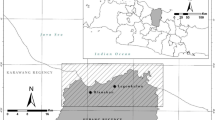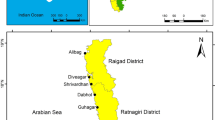Abstract
With the thriving development of high spatial resolution sensors, an increasing number of metric and sub-metric resolution remote sensing images are currently available, which allows for accurate geometrical analysis of objects at fine scales. Aimed to reveal the regional difference of coast land use in the Bohai Sea, series remote sensing images of HJ-1ACCD obtained in July of 2013 were employed to monitor land use in 5 km coastal zone of 13 regions around the Bohai Sea. Some evaluation index, such as dominant land use type, land use dominant index and land use intensity index were established to evaluate the regional difference of land use in the coast zone. The result shows: there exist obviously regional differences in coast land use around the Bohai Sea. Some regions such as Huludao and Yantai are typical farmland landscape. Some regions such as Dongying and Panjin are typical reed wetland landscape, While Cangzhou is typical fishpond landscape, Weifang and Binzhou are typical salt pond landscape. Land use in coast of Huludao, Yantai and Weifang are single dominated structure, the dominant land use type are farmland in Huludao and Yantai. It is salt pond in Weifang. Their dominant index is all above 0.34. Land use in coast of Tianjin, Qinhudao and other 8 regions are dual structure. The dominant index of dominant land use type ranged from 0.10 to 0.30. The land use intensity index is biggest in coast of Tianjin and Cangzhou with value 2.15 and 2.12, respectively.



Similar content being viewed by others
References
Allan JD, McIntyre PB, Smith S et al (2013) Joint analysis of stressors and ecosystem services to enhance restoration effectiveness. Proc Natl Acad Sci 110:372–377
Aning S, Dongzhi Z, Jianping G (2009) Application of landscape ecology in marine resources and environment: discussion of progression of marine landscape ecology. Acta Ecol Sin 29:2289–2295
Arvor D, Durieux L, Andrés S, Laporte M (2013) Advances in geographic object based image analysis with ontologies: a review of main contributions and limitations from a remote sensing perspective. ISPRS J Photogramm Remote Sens 82:125–137
Benediktsson JA, Chanussot J, Moon WM (2012) Very high-resolution remote sensing: challenges and opportunities. Proc IEEE 100(6):1907–1910
Benz UC, Hofmann P, Willhauck G, Lingenfelder I, Heynen M (2004) Multiresolution, object-oriented fuzzy analysis of remote sensing data for GIS-ready information. ISPRS J Photogramm Remote Sens 58(3–4):239–258
Blaschke T (2010) Object based image analysis for remote sensing. ISPRS J Photogramm Remote Sens 65(1):2–16
Carlo G, Maurizio R, Enrico S et al (2006) Climate and land use changes, biodiversity and agri- environmental measures in the Belluno province, Italy. Environ Sci Policy 9:163–173
Castilla G, Hay GJ, Ruiz JR (2008) Size-constrained region merging (SCRM): an automated delineation tool for assisted photo interpretation. Photogramm Eng Remote Sens 74(4):409–419
Chang C-C, Lin C-J (2011) LIBSVM: a library for support vector machines. ACM Trans Intell Syst Technol 2:1–27
Chen Q (2012) Modified two-dimensional Otsu image segmentation algorithm and fast realisation. IET Image Process 6(4):426–433
Chen J, Li J, Pan D, Zhu Q, Mao Z (2012) Edge-guided multiscale segmentation of satellite multispectral imagery. IEEE Trans Geosci Remote Sens 50(11):4513–4520
Dahiya S, Garg PK, Jat MK (2013) Object oriented approach for building extraction from high resolution satellite images, in: IEEE 3rd international advance computing conference (IACC)
Dogliotti AI, Ruddick KG, Nechad B et al (2015) A single algorithmto retrieve turbidity from remotely-sensed data in all coastal and estuarine waters. Remote Sens Environ 156:157–168
Elijah Ramsey III, Werle D, Suzuoki Y et al (2012) Limitations and potential of satellite imagery to monitor environmental response to coastal flooding. J Coast Res 29:301–310
Giorgio A, Francisco JG, Genny B (2013) Determination of cliffed coastline sensitivity and associated risk for human structures: a methodological approach. J Coast Res 29:1292–1296
Hay GJ, Blaschke T, Marceau DJ, Bouchard A (2003) A comparison of three image-object methods for the multiscale analysis of landscape structure. ISPRS J Photogramm Remote Sens 57(5):327–345
Hengstum PJ, Reinhardt EG, Boyce JI et al (2007) Changing sedimentation patterns due to historical land -use change in Frenchman’s Bay, Pickering, Canada: evidence from high - resolution textural analysis. J Paleolimnol 37:603–618
Hu C, Xu Z et al (2014) Semantic link network based model for organizing multimedia big data. IEEE Trans Emerg Topics Comput 2(3):376–387
Jordan G, van Rompaey A, Szilassi P et al (2005) Historical land use changes and their impact on sediment fluxes in the Balaton basin (Hungary). Agric Ecosyst Environ 108:119–133
Klemas V (2011) Remote sensing of coastal plumes and ocean fronts: over view and case study. J Coast Res 28:1–7
Liu XP, Li X, Liu L et al (2008) A bottom-up approach to discover transition rules of cellular automata using ant intelligence. Int J Geogr Inf Sci 22(11–12):1247–1269
Ma W, Yuanzhi Z, Ping S et al (2008) Review of research on land use and land cover change in coastal zone. Prog Geogr 27:87–94
Murai H, Omatu S (1997) Remote sensing image analysis using a neural network and knowledge-based processing. Int J Remote Sens 18(4):811–828
Myint SW, Goner P, Brazel A, Grossman-Clarke S, Weng Q (2011) Per-pixel vs. object-based classification of urban land cover extraction using high spatial resolution imagery. Remote Sens Environ 115(5):1145–1161
Pal NR, Pal SK (1993) A review on image segmentation techniques. Pattern Recognit 26(9):1277–1294
Ruiz-Luna A, Berlanga-Robles CA (2003) Land use, land cover changes and coastal lagoon surface reduction associated with urban growth in northwest Mexico. Landsc Ecol 18:159–171
Serif H, Cigdem CH, Cigdem K et al (2013) Analyzing landscape change and urban sprawl in a Mediterranean coastal landscape: a case study from Izmir, Turkey. J Coast Res 29:301–310
Suo AN, Li BY, Yu YH (2014) Monitoring and assessment of sea use landscape pattern based on satellite remote sensing: a case in huludao test region. J Satell Oceanogr Meteorol 1:23–28
Suo AN, Zhang MH (2015) Sea area reclamation and coastline change monitoring by remote sensing in coastal zone of Liaoning in China. J Coast Res 73:725–729
Tilton JC, Tarabalka Y, Montesano PM, Gofman E (2012) Best merge region growing segmentation with integrated nonadjacent region object aggregation. IEEE Trans Geosci Remote Sens 50(11):4454–4467
Tweel AW, Turner RE (2012) Watershed land use and river engineering drive wetland formation and loss in the Mississippi River bird foot delta. Limnol Oceanogr 57:18–28
Wang Z, Jensen JR, Im J (2010) An automatic region-based image segmentation algorithm for remote sensing applications. Environ Model Softw 25(10):1149–1165
Weixin O, Yang G (2003) Progress in the study on coastal environment evolvement consequence of land use/cover change. Prog Geogr 22:360–368
Wuest B, Zhang Y (2009) Region based segmentation of QuickBird multispectral imagery through band ratios and fuzzy comparison. ISPRS J Photogramm Remote Sens 64(1):55–64
Xiaohua T, Huan X, Qihao W (2014) Urban land cover classification with airborne hyperspectral data: what features to use? IEEE J Sel Top Appl Earth Obs Remote Sens 7(10):3998–4009
Xiong J-N, Liu S (2011) The decision tree algorithm of automatically extracting residential information from tm image, in: International conference on computational and information sciences (ICCIS)
Xu Z, Lin M, Yunhuai L, Chuanping H, Lan C (2016) Semantic enhanced cloud environment for surveillance data management using video structural description. Computing 98(1–2):35–54
Xu Z, Yunhuai L, Lin M, Chuanping H, Lan C (2015) Semantic based representing and organizing surveillance big data using video structural description technology. J Syst Softw 102:217–225
Xu Z et al (2015) Knowle: a semantic link network based system for organizing large scale online news events. Futur Gener Comput Syst 43–44:40–50
Zhang L (2014) Remote sensing image segmentation based on an improved 2-D gradient histogram and MMAD model. IEEE Geosci Remote Sens Lett 12:58–62
Zhicheng L, Itti L (2011) Saliency and gist features for target detection in satellite images. IEEE Trans Image Process 20(7):2017–2029
Zhong Y, Zhao J, Zhang L (2014) A hybrid object-oriented conditional random field classification framework for high spatial resolution remote sensing imagery. IEEE Trans Geosci Remote Sens 52(11):7023–7037
Acknowledgments
The authors are grateful to the National Natural Science Funds of China (No.41376120) and the Chinese Special Project for Marine Public (No. 201105006) for financial support.
Author information
Authors and Affiliations
Corresponding author
Rights and permissions
About this article
Cite this article
Suo, A., Lin, Y. & Zhang, M. Regional difference of coastal land use around the Bohai sea based on remote sensing images. Multimed Tools Appl 75, 12061–12075 (2016). https://doi.org/10.1007/s11042-016-3334-1
Received:
Revised:
Accepted:
Published:
Issue Date:
DOI: https://doi.org/10.1007/s11042-016-3334-1




